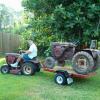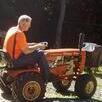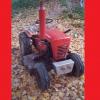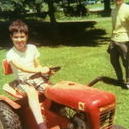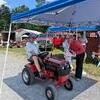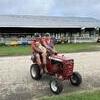Countdown To Christmas!
|
|
Leaderboard
-
in all areas
- All areas
- Markers
- Marker Comments
- Marker Reviews
- Articles
- Article Comments
- Article Reviews
- Classfieds
- Classified Comments
- Classified Reviews
- Wiki's
- Wiki Comments
- Wiki Reviews
- Blog Entries
- Blog Comments
- Images
- Image Comments
- Image Reviews
- Albums
- Album Comments
- Album Reviews
- Files
- File Comments
- File Reviews
- Posts
-
Today
-
All time
November 28 2011 - December 25 2025
-
Year
December 25 2024 - December 25 2025
-
Month
November 25 2025 - December 25 2025
-
Week
December 18 2025 - December 25 2025
-
Today
December 25 2025
- Custom Date
-
All time
Popular Content
Showing content with the highest reputation on 12/25/2025 in all areas
-
10 pointsMerry Christmas to all! Let us remember the greatest gift, and be happier to give than receive!
-
10 pointsReceived this much appreciated Tee Shirt today. It also relates to Tractors... enjoy! Percussive Maintenance - Stuck Carb Needle High Impedance Air Gap - Rectifier Connector fell off Cycle Power to the Panel - Battery Charger not working Thermally Reconfigured - The dreaded 9-Pin Connector Kinetic Disassembly - Balance Gear Failures
-
9 pointsCelebrated on December 25th each year, Christmas Day is a holiday that commemorates the birth of Jesus Christ, who is the central figure of Christianity. It is a time for Christians around the world to come together and celebrate Jesus and the message of love, peace, and redemption that he brings. If you were a devoted viewer of MASH you will remember this one. If not, it is heartwarming and heart-wrenching at the same time and well worth watching. It may put a lump in your through or a tear in your eye, I find it very moving. Merry Christmas. https://www.youtube.com/watch?v=aEpkPF_X5UQ
-
7 points
-
7 points
-
7 pointsAround here we have good access to Non ethanol fuel. No ethanol. No additives. No problems. Dry gas is alcohol. Alcohol dries out rubber and possibly even damages aluminum. Carburetors are aluminum and have rubber seals. IMHO... do NOT use dry gas. This fall we put Sta-bil in the new generator gas tank. First time we've ever used it. Depending on how long the generator sets will be the answer for if we keep using the stabilizer.
-
6 pointsFYI. I've been told there can potentially be as much 3 gallons IN the pump assembly. Most of that won't likely matter but I've tried to be sure I get that as a minimum into the road vehicle. I also bought an ethanol tester. I've yet to use it though because I started buying my E free gas exclusively where the hoses are dedicated.
-
6 pointsI wholeheartedly agree. If you have access to ethanol-free gas, you have all you need. It's expensive, but worth it. And if it is dispensed from the same pump as ethanol fuel, run the first gallon (or two) into your vehicle. Otherwise you have a blend of ethanol and ethanol free in your gas can. I've seen old trucks pulled from a barn with 1/4 tank of old gas in them, after setting for years that start and run with a jump. Good luck with ethanol fuel that is 90 days old.
-
5 pointsOne time on a work order I used the phrase " performed external auditory fuel level inference test, indicates fuel level may be too low for proper operation" because I didn't think the customer would like the wording "hit tank, sounds empty". Love that shirt BTW.
-
5 pointsWeld da hood shut baby. No more trouble wid dis one. Dry as mojave and purring like a kitten..
-
4 pointsMy wife had our neighbor (Mifflintown Metal Works) make me this shop sign for Christmas! Love it!!
-
4 points
-
4 pointsMerry Christmas to all of you! May you have a wonderful time with your families.. or tractors
-
4 points
-
4 points
-
3 points
-
3 points
-
3 points
-
3 points
-
3 points
-
3 points
-
3 points
-
2 pointsLock n flate adapter for tires, New Milwaukee batteries and a tractor seat with adjustable base.
-
2 points
-
2 points
-
2 pointsWhile the experts prognosticate on the tractor's original pedigree, please post the seat in the ugly seat thread. It has a very nice green patch... every little bit helps with global warming...
-
2 points
-
2 points@ebinmaine MERRY CHRISTMAS ! was thinking about your set up , commonality ? 4 wheels , just the ideas and possabilites , might help you out , pete
-
2 pointsI like them, had a set on my former 89 520-H, bought a new set for my 97 520-H, not near the grip as chains, but still adds good grip and saves the blacktop.
-
2 points
-
2 pointsWhy all the snowmen decorum, and not of me! I've been slighted and disrespected. I think Karl may get some coal in his stockings this year.
-
2 points
-
2 pointsNo joke, when we looked at this property- the sunset was definitely part of the reasons we liked it so much. My pics are not altered at all. The first two were taken about 5 minutes behind the second two.
-
2 pointsThat old fat guy didn't even bring this miner a lump o coal for ten years. And I got his mug all over the place. Outside Peepin in the kitchen window On the tree Holding the nice list...that I must not be on. Maybe this is why Rudolph makes a U turn when he sees this. Anyway, I filled the stockings for ya. And there won't be any cookies for you. Merry Christmas to All My Wheel Horse Family
-
2 pointsYou can clearly see were I traced around pump, the newly made gaskets are in there.
-
2 pointsYeah that Karl needs to be taught a lesson! Feel free to drop off all his Christmas loot here at my place if you think it’ll help drive the lesson home @nylyon 🎅🎅🎅🎅🎅🎅🎅🎅🎅🎅🎅🎅🎅🎅🎅
-
2 pointsSanta, don't be so hard on Karl, he has a full time job keeping us in line. We all believe in you and have been so eagerly anticipating your visit tonight.
-
1 pointI thought that plate was an option for both the 10 and 12 but IDK fer sure.
-
1 point
-
1 point
-
1 pointThe purpose of dry gas is to absorb any water that got into the fuel system. It is simply alcohol that causes the water to mix with the gas and carry it along to be burned. Dry gas has been obsolete for nearly half a century since you can purchase E10 gas at any station and it will have a gallon of alcohol in every ten gallons. Yes, they may still be selling dry gas to the unsuspecting.
-
1 point
-
1 point
-
1 pointthis was built by Karl Stohry. It is a butt buggy for shows. Probably use as leaf collector or wagon puller
-
1 pointI used that sealant on my second attempt. Improved but not cured my woes. This time I took particular care to lay a nice bead to minimize squeeze out from the RTV. Looking at the outside, I'd say I'm in good shape. Now that I've had the hydro-pump and motor apart, I wouldn't be afraid to tackle it again, if needed. Much in part to some of your excellent posts. Edit: the reason for the initial teardown was terrible leakage from both the input shaft and the casing sealed with blue RTV. Here's a photo of the filter I found once I had it apart!
-
1 point
-
1 pointIt’s a warm day here in MA so I brought out the 1993 314-8 and the deck for a last cleaning of the season.
-
1 pointYes - only after about 1/2 hour or so... seems related to amount of gas in tank. I am not a wiring guy... keeps it isolated and simple for the dumbbell that uses it... There is zero start up hesitation now and it runs / idles way better...
-
1 pointAdded a fuel pump to the C-105 snow plow tractor... wow what a difference... Primer bulb worked great for a few years but this year I was doing the "on the fly prime" to many times while plowing snow... so Game changer. Separate switch to operate...
-
1 pointGo to a junk yard and find a 90's and lower GM. They used the sleeve. There is probably 18 jillion of them out there.
This leaderboard is set to New York/GMT-05:00
-
Newsletter

